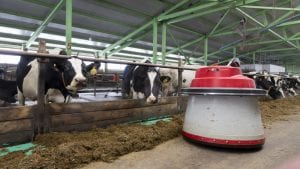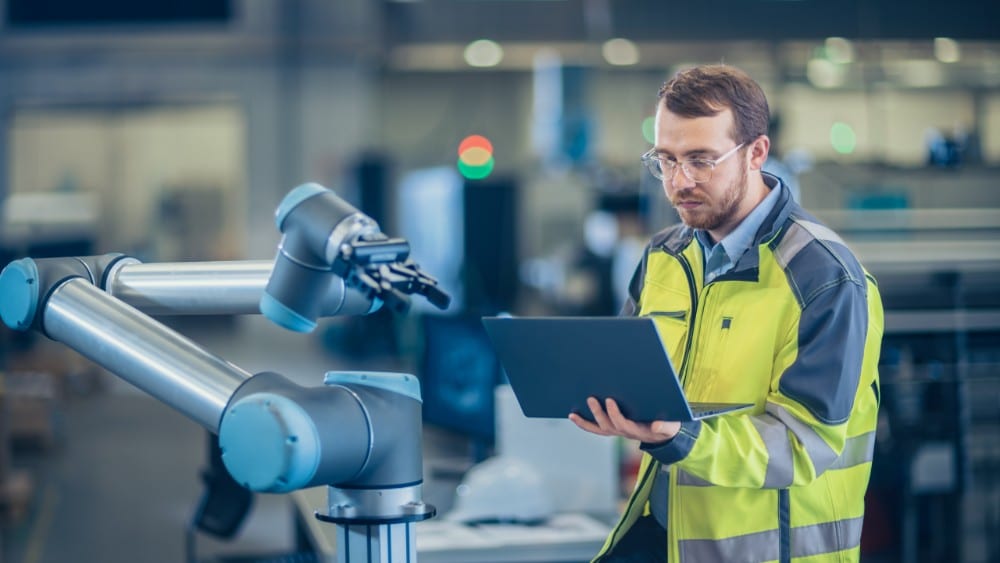How Robots Are Changing the Ways Industrial Cleaning is Done
If you’re picturing a robotic maid pushing a broom and chatting with the family dog, that’s not quite what industrial cleaning robots do. In fact, robots tasked with cleaning do not have “faces” or look anything like the cartoonish robot maids from the world of science fiction. Instead, these durable robots take care of cleaning tasks that are hazardous to human health and safety. These robots can get the job done faster and more effectively than their human counterparts. And they do it for significantly less money, too.
How Are Robots Used for General Industrial Cleaning?
Robots are used in a variety of ways to clean industrial spaces. They can take care of tedious tasks like cleaning floors, windows, restrooms, and ducts. They can be used in highly specialized jobs, too.
It might come as a surprise to learn that restrooms can be cleaned by robots. These self-cleaning restrooms use robotic arms and ultraviolet light to clean stalls and hand-washing areas throughout the day. When humans have to clean bathrooms, the spaces need to be closed to users. But with self-cleaning robots, this is not the case. They can be cleaned and disinfected quickly, so people who need the facilities are not inconvenienced.
Hospitals and other large establishments have turned to germ-zapping robots. These can disinfect individual rooms without needing to empty out spaces. Robot vacuums are being used in industrial and commercial floor care, too.
Are you still wasting time and money on conventional tank cleaning?
See how your plant could be running more efficiently with robotic tank cleaning. View
Schools are always looking for ways to save money. Robotic floor cleaning can help them save money in the long run. They reduce the need for costly labor expenses. They can be programmed to clean at the same time and in the same places. Robot floor cleaners are used in other large spaces with common areas like airports, hospitals, and office buildings.
Robots can also take care of cleaning ducts. When humans are hired to do this task, it is expensive and time-consuming. Traditional duct cleaning involved using large specialized trucks to blow out debris. Robots can enter the ducts, and humans can control them via remote control. Once in the ducts, robots can clean all of the debris without the need for large machinery or damaging the ducts for access.
Robots can also clean windows in industrial spaces. They do not require the same safety gear that humans need to scale buildings to clean windows on skyscrapers.
How Robotics Are Used to Clean in Different Industries
Robots can be used for highly specific industrial cleaning situations. When robots are tasked with cleaning, human employees can do more thoughtful, analytical duties, and not be put in harm’s way.

Cleaning in the Healthcare Industry
Many industries require intensive disinfectant, and it can be difficult to maintain a standard of cleanliness in the healthcare industry. But with industrial cleaning robots, hospitals are finding it easy to limit the spread of infections. Many of them use ultraviolet light and hydrogen peroxide to keep the hospital space clean and disinfected.
Cleaning robots are often used in operating rooms, burn units, and intensive-care units, where cleaning can take longer with human employees. The robots are rolled into the rooms where they can detect infection. They can clean manually, or they can clean using UV light. Unfortunately, many hospitals find them too expensive, so they continue to employ humans who are not as efficient as robots. But, if hospitals do use the cleaning robots, they can divert money to patient care rather than janitorial expenses.
Related Article: Safer Alternatives to Traditional Industrial Cleaning
Tank Cleaning in Industrial Plants
In the world of chemical plants, robots are commonly used to clean storage tanks. In the past, humans donned PPE from head to toe and entered the confined spaces for hours at a time to clean and disinfect the tanks. While this happened, plants had to be shut down. And the employees who entered the tanks had to be closely monitored while inside. They also need to be disinfected when they exit for breaks and at the end of the day. These cleanings took weeks and months to complete.
Now, chemical plants are using robots to clean their tanks. Robotic tank cleaning robots can do the job without needing to wear PPE, and they can do it without having to go home for the evening. By entering the confined spaces, the robots protect humans who no longer have to risk their lives to clean inside of the hazardous tanks. The robots are controlled by humans via remote, and the robots get the job done in a fraction of the time, at a lower cost.
 Robots and Maintenance in Agriculture
Robots and Maintenance in Agriculture
The agricultural industry is also loaded with dangerous machinery and hazardous conditions. Farmers are slowly turning to robots to take care of their flora and fauna. They can also use robots to muck out stalls and barns, so humans do not have to be exposed to animal waste.
While this isn’t quite the same as cleaning an industrial building or disinfecting a tank, robots are being used to take care of livestock. Dairy farmers are letting robots feed, milk, and monitor the health of their cows. Farmers can check on their robots through smartphone technology. It helps protect the health of the cattle and of the people who care for the large animals. The robots are more efficient at managing a herd than people because they can identify the inefficiencies.
Cleaning at Shipyards
Building ships is a business filled with big things. Consider the size of a cruise ship or a tanker. Then, try to clean them before setting them asea. Robots are now being used to clean the hulls before they set sail. Robots have been used for welding in shipyards for years, and they only recently began cleaning the ships, too. With robots, shipyards can build more ships per year than those that use humans for most tasks.
Robots can scale ship walls, which is like climbing a tall building. This task can be dangerous for humans, but not for a robot. The robots are controlled via remote control or through wearable technology.
One of the most important reasons to turn to robots for industrial cleaning is human safety. When robots clean in confined spaces or at excessive heights, humans do not have to worry about wearing PPE or being exposed to dangerous gases, fall hazards, or other issues. Employers can save money in the long run by using robots to clean and maintain industrial spaces.





